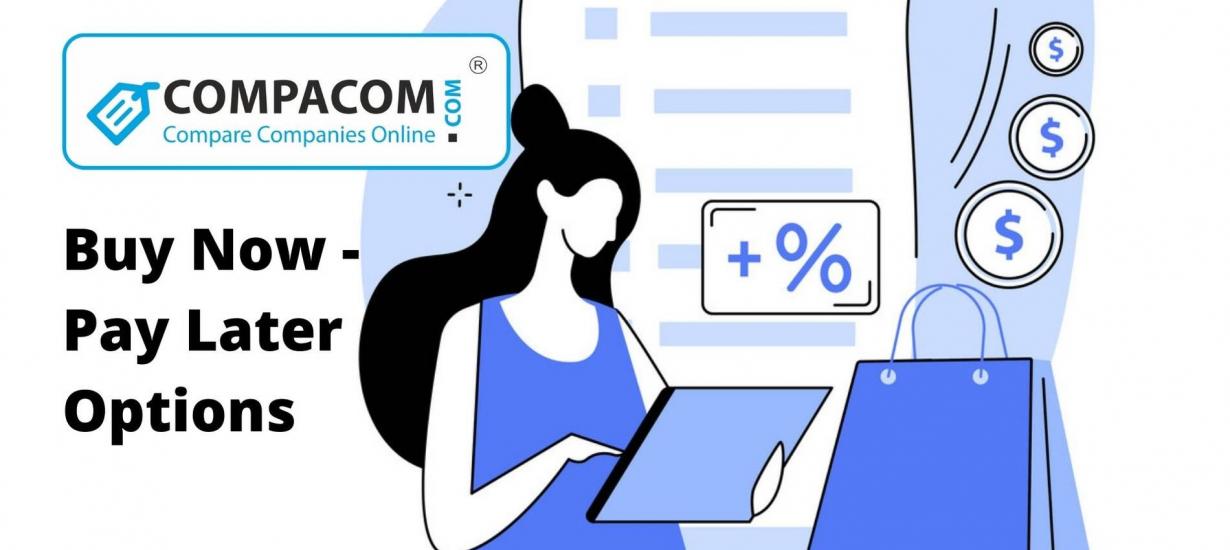Buy Now, Pay Later for Bad credit
Even if you have bad credit, you can still find Buy Now Pay Later. Don't wait, start now!
Everyone is faced with emergencies from time to time, such as extra payments, medical treatment, car repairs, and more. Of course, coping with such difficulties is not cheap and not everyone can afford to cover them at the right time. Thus, you can consider the buy now, pay later option. Using this opportunity, you can quickly deal with your emergency and buy purchases you need.
What is Buy Now Pay Later?
Buy now pay later is an opportunity to get money and make the necessary purchases when you are in a difficult life situation. Thus, even people with bad credit can afford to have their car repaired, pay bills, buy essential items, make purchases and more.
As the buy now pay later industry is increasing every year, there are many offers to help you get funding. The most popular options are credit cards and loans.
Check out the list of 10 buy now pay later options. Thus, one of them will certainly be relevant to you and you will find the type of financing that you need.
10 buy now pay later options
- Guaranteed loans
- Payday loans
- Installment loans
- Personal loans
- Title loans
- Bad credit loans
- Traditional credit cards
- Credit cards for bad credit
- “Buy now pay later” retail stores
- Single-use credit
In order to understand which option suits you best, it is important to study the brief information about each of them.
1. Guaranteed loans
A guaranteed loan is a type of lending that enables most borrowers to get quick financing and solve their financial problems. However, it should be noted that there are no “guaranteed” loans. This type of lending has received this name because more than 80% of applications are approved. This way, even if you have a bad credit history, you will be able to apply and get a guaranteed loan.
2. Payday loans
A payday loan is a short-term type of loan that you have to repay on the day of your next paycheck. Typically, with a payday loan, you can get a small amount of $ 100 to $ 500 (sometimes up to $ 1000) to cover emergency expenses. This loan is unsecured, so you can get a loan without any collateral. However, it is important to note that you should compare the offers of different lenders, otherwise you may get unfavorable interest rates.
3. Installment loans
An installment loan is a type of financing provided to a borrower for a period of 2 to 6 months (sometimes longer) to cover emergency difficulties or urgent purchases. It is important to note that this type of lending requires regular monthly payments until the debt is fully repaid. Typically, you can get an amount from $ 1,000 to $ 5,000, however the exact amount depends on the repayment terms, credit history and many other factors.
4. Personal loans
A personal loan is a type of lending that enables the borrower to receive money for personal needs. With a personal loan, you can get an amount from $ 1,000 to $ 100,000 depending on the repayment terms, your income, credit history and other factors. However, you should pay attention to interest rates in order not to get an unfavorable offer.
5. Title loans
A title loan is a type of loan that enables car owners to quickly obtain financing. If your application is approved, you must temporarily transfer your vehicle title to the lender until the loan is paid off. The advantage of this type of loan is that you can continue to drive your car even though the loan is secured.
6. Bad credit loans
A bad credit loan is a type of lending that even allows borrowers with bad credit to quickly get financing and cope with their financial difficulties. However, since lenders, providing such loans to borrowers with bad credit, run the risk, interest rates will be higher than with traditional lending.
7. A revolving credit line
There are credit cards that allow you to shop with any retailer or service provider that accepts these cards. Banks refer to this as a revolving line of credit. Thus, the card allows you to make purchases and pay off the debt in regular monthly installments. Once the payment has been made, you can use this part of your credit line again.
8. Credit cards for bad credit
Since many Americans use credit cards not only to shop online but also to pay for their monthly bills, the need for a good buy now, pay later credit cards grows. Thus, you can get a credit card for people with bad credit history and pay off the debt on a monthly basis, however, the interest rates will be higher than for those with good credit.
9. “Buy now pay later” retail stores
If you don't have the money to make a purchase, you should know that there are many retailers who offer their own credit cards or credit accounts that give you the opportunity to make the purchases you need and pay later. Of course, you need to know that these accounts or cards work at the specified retailers only.
10. Single-use credit
Some shops provide a feature such as single-use credit that you can use to make a one-time purchase. The difference between this option and the revolving credit line is that after you pay off the debt, you will no longer be able to use this opportunity again. You can find this type of financing at specialty stores such as furniture or appliance stores. Thus, it is a one-time loan that gives you the opportunity to get what you need during a difficult life situation.
After examining the main financing options, you can surely find what is right for you. However, remember that often you will have to deal with interest rates, which can be quite high if you have a bad credit history. If you want to take a loan, compare options in order to choose the most advantageous offer. Also, do not overuse credit cards and revolving credit lines, as otherwise, it will be quite difficult for you to get out of debt. Use your money wisely!



You are about to post a question on compacom.com:
Any comments or reviews made on this website are only individual opinions of the readers and followers of the website. The website and its authors team are not responsible, nor will be held liable, for anything anyone says or writes in the comments. Further, the author is not liable for its’ readers’ statements nor the laws which they may break in the USA or their state through their comments’ content, implication, and intent.